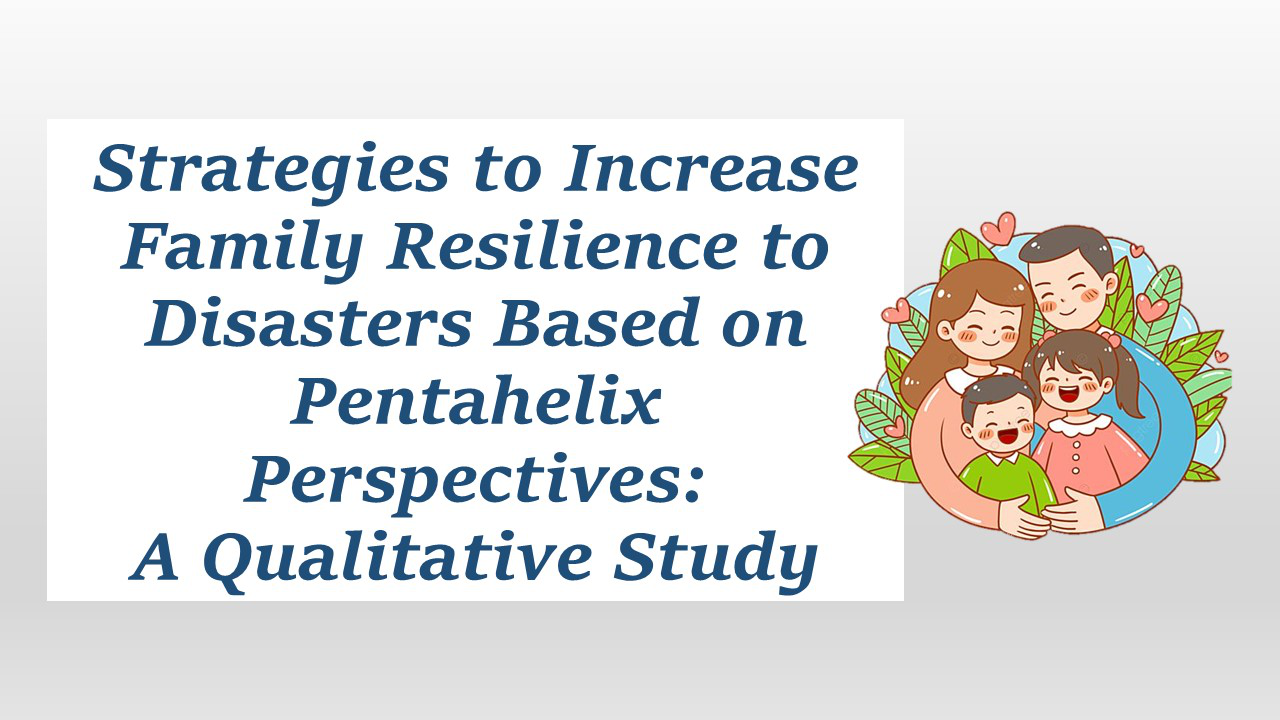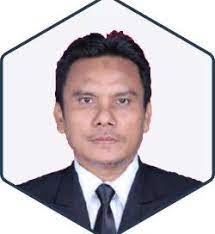Strategies to Increase Family Resilience to Disasters Based on Pentahelix Perspectives: A Qualitative Study
DOI:
https://doi.org/10.23917/bik.v18i2.8655Abstract
Disasters affect family dynamics as the smallest social unit in society. Disasters that occur in communities have a considerable impact on the lives and property, and mental health of survivors. In addition, it also affects human health, which risks undermining the well-being of families, due to the health problems that can occur. The family's unpreparedness in these tasks can increase the psychological and physical impacts experienced by its members. Therefore, strategies in disaster preparedness are important to reduce the impact. This study aims to explore strategies to improve family resilience in disaster mitigation. The number of interviews is 21 people, consisting of women and men with an average age of 45 years, who have different backgrounds. Including academians, business, community, government, and journalists. The results showed that the strategy to increase family resilience to disaster is based on 5 family tasks from Maglaya's theory, including that families must have a preparedness plan and knowledge about disaster management through education to families about the steps that must be taken before, during, and after a disaster is very helpful in increasing family resilience. The conclusion is that disaster training and simulation programs involving family members have proven effective in building confidence and necessary skills. This research can be concluded that family disaster preparedness depends on good knowledge and planning. Disaster nurses play an important role in education and training, which helps reduce psychological and physical impacts. Thus, community safety and well-being can be improved by exploring strategies to improve family resilience in disaster mitigation
Downloads
References
Ahmadi, & Kulsum, U. (2024). Resilience and family harmony after the mount semeru eruption disaster. International Journal of Law Dynamics Review, 2(2). https://doi.org/10.62039/ijldr.v2i2.77
Anam, A. K., & Abiddin, A. H. (2022). The Role of Family Against Children’s Anxiety After Disaster of Kelud Eruptions. Jurnal Keperawatan, 13(1), 53–58. https://doi.org/10.22219/jk.v13i1.15155
Andrian, A., Bukit, E. K., & Nasution, S. Z. (2025). Model ketahanan keluarga dalam menghadapi bencana banjir di kelurahan aur kota medan. Jurnal Ners Volume, 9(3), 29–36. http://journal.universitaspahlawan.ac.id/index.php/ners
Anitasari, T., Kusumaningrum, I., Suci, D. L., & Wulandari, D. (2022). Parents behavior for delivering adolescent reproductive health education. International Journal of Public Health Science, 11(4), 1202–1209. https://doi.org/10.11591/ijphs.v11i4.21440
Ayuningtyas, P., Setiyarini, S., & Alim, S. (2023). Community Preparedness Education and Training Program in Facing Earthquake Disasters: literatur review. Jurnal Berita Ilmu Keperawatan, 16(2), 240–251. https://doi.org/10.23917/bik.v16i2.2174
Bushnaq, O. M., Mishra, D., Natalizio, E., & Akyildiz, I. F. (2022). Unmanned aerial vehicles (UAVs) for disaster management. Nanotechnology-Based Smart Remote Sensing Networks for Disaster Prevention, January, 159–188. https://doi.org/10.1016/B978-0-323-91166-5.00013-6
Dewi, N., Mesa, K., Wihastuti, T. A., Nugroho, F. A., & Supriyadi, M. (2023). How electronic emergency and disaster system can reduce nursing workload ? International Journal of Public Health Science, 12(4), 1572–1579. https://doi.org/10.11591/ijphs.v12i4.22872
Faizatiwahida, N., Setiyarini, S., & Alim, S. (2024). An Education and Training Program on Disaster Triage for Nurses and Nursing Students: Literature Review. Jurnal Berita Ilmu Keperawatan, 17(1), 92–102. https://doi.org/10.23917/bik.v17i1.3882
Gumelar, G., Akbar, Z., Suryaratri, R. D., Erchanis, H., & Wahyuni, L. D. (2020). The Effect of Family Resilience towards Household Disaster Preparedness in Coastal Coast District of Sumur , Banten The Effect of Family Resilience towards Household Disaster Preparedness in Coastal Coast District of Sumur , Banten. IOP Publishing, 4(7), 1–6. https://doi.org/10.1088/1755-1315/448/1/012085
Harianto, J. W., & Nuntaboot, K. (2023). Exploring problems and needs in disaster preparedness : a qualitative study. Jurnal Ners, 18(3), 212–219. https://doi.org/10.20473/jn.v18i3.44841
Hindriyastuti, S., Kako, M., Ranse, J., & Hutton, A. (2019). Nursing Students’ Roles and Experiences of Disasters in A Nursing School. Jurnal Keperawatan Padjadjaran, 7(1), 38–48. https://doi.org/10.24198/jkp.v7i1.997
Khatimah, K., & Pudjiati, S. R. R. (2022). Posttraumatic Growth : Peran Trauma Exposure dan Family Hardiness Pada Penyintas Likuifaksi Pasigala Posttraumatic Growth : The Role of Trauma Exposure and Family Hardiness Against Pasigala Liquefaction Survivors. Jurnal Magister Psikologi UMA, 14(2), 132–142. https://doi.org/http://doi.org/10.31289/analitika.v14i2.8123
Liu, Y., & Wu, H. (2017). Water Bloom Warning Model Based on Random Forest. International Journal of Publich Health Science, 7(1), 45–48.
Matsukawa, A., Nagamatsu, S., Ohtsuka, R., & Hayashi, H. (2024). International Journal of Disaster Risk Reduction Disaster Resilience Scale for individuals : A fundamental requirement for a disaster-resilient society. International Journal of Disaster Risk Reduction, 107(March), 104405. https://doi.org/10.1016/j.ijdrr.2024.104405
Okon, A. J., Chibuzor-eke, U. E., Oka, I. A., Eyam, L. E., Akpan, M. I., & Inah, S. A. (2023). Knowledge , practices , and antibiotics use patterns among animal production farmers in Calabar Metropolis. International Journal of Public Health Science, 12(4), 1647–1655. https://doi.org/10.11591/ijphs.v12i4.23266
Pratama, H., & Hattarina, S. (2023). Knowledge Of Volcanic Disaster Management Efforts Towards A Disaster Resilient Community. Proceeding International COnference on Education, Society and Humanity, 1(1), 273–277. https://doi.org/10.1088/1755-1315/451/1/012014
Pratama, J. P., Dewo, L. P., & Rahmat, H. K. (2024). Model Sinergitas Pentahelix dalam Rangka Pengurangan Risiko Bencana di Indonesia: Sebuah Tinjauan Pustaka. Journal of Current Research in Disaster Response and Emergency Management E-ISSN: Xxxx-Xxx, 1(1), 1–6.
Rahman, S., & Pradido, R. (2020). The anxiety symptoms among chronic kidney disease patients who undergo hemodialysis therapy. International Journal of Publich Health Science, 9(4), 281–285. https://doi.org/10.11591/ijphs.v9i4.
Ratnanik, Zuyina Luklukaningsih, Sukasih Ratna W, Prasetyo, J., Abdul Hadi, Rismanto Gatot T, & Paramita Lea c. (2022). Uji Determinan Sikap Kesiapsiagaan Perempuan Di Desa Kawasan Semeru Sumber Wuluh Lumajang Dalam Menghadapi Erupsi Dan Banjir Lahar Dingin. WIJoB - Widya Dharma Journal of Business, 1(02), 20–25. https://doi.org/10.54840/wijob.v1i2.43
Ruslan, R., Khalifatun, U. N., & Rahman, U. (2023). Penelitian Grounded Theory: Pengertian, Prinsip-Prinsip, Metode Pengumpulan Dan Analisis Data. Edu Sociata: Jurnal …, 6, 699–708. https://stkipbima.ac.id/jurnal/index.php/ES/article/view/1483
Setianingsih, Darwati, L. E., & Setyowati, A. R. (2020). Analysis of Family Preparedness in Flood Disaster. Proceedings of the International Conference on Nursing and Health Sciences, 1(1), 153–160.
Sriyono, Nursalam, & Hamzah. (2020). The resilience of families who live in a disaster-prone location in terms of disaster preparedness: A scoping review. International Journal of Psychosocial Rehabilitation, 24(7), 9215–9225.
Suhari, S., Pebriyanti, D. ., Sulistyono, R. ., & Rahmawati, P. . (2023). Role comunnity- based disaster management system. International Agronursing Conference.
Sunarti, E., Fithriyah, A. F., Elwamendri, E., Suandi, S., & Muchlis, F. (2023). Family Ecological Transaction for Disaster Risk Reduction: Case of Anak Dalam Tribe in Bukit Dua Belas National Park, Air Hitam Regency, Jambi, Indonesia. International Journal of Disaster Management, 6(1), 101–112. https://doi.org/10.24815/ijdm.v6i1.31163
Sutini, T., Suryani, S., & Trisyani, Y. (2021). Psychosocial Family Post-Landslide Disasters in The Mountain Areas: A Qualitative Study During COVID-19 Pandemic. Open Access Macedonian Journal of Medical Sciences, 9(6), 20–25. https://doi.org/10.3889/oamjms.2021.7316
Valter, R., Santiago, S., Andrade, L. O. M., & Barreto, I. C. D. H. C. (2019). Data Mining and Risk Analysis Supporting Decision in Brazilian Public Health Systems. International Journal of Public Health Science, 3(1), 2–7. https://doi.org/10.1109/HealthCom46333.2019.9009439.
Wakhid, A., Yani, A., & Hamid, S. (2020). Family resilience minimizes post-traumatic stress disorder : A systematic review ଝ. Enfermería Clínica, 30(1), 1–5. https://doi.org/10.1016/j.enfcli.2020.01.002
Wijaya, H. (2018). Analisis Data Kualitatif Model Spradley (Etnografi) Hengki. Jakarta: Salemba Humanika, March, 283–284. https://core.ac.uk/download/pdf/287061605.pdf

Downloads
Submitted
Accepted
Published
How to Cite
Issue
Section
License
Copyright (c) 2025 Suhari Suhari, R Endro Sulistyono, Primasari Mahardhika Rahmawati, Dwi Ochta Pebriyanti

This work is licensed under a Creative Commons Attribution 4.0 International License.


















